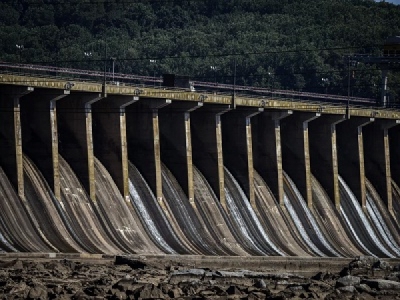
Posted on August 15, 2017
JUST A few miles from the Maryland-Pennsylvania border lies the Conowingo Dam, an 88-year-old power station stopping the massive Susquehanna River, which is the source of much of the fresh water flowing into the Chesapeake Bay. Since bay cleanup began, states in the Chesapeake watershed have relied on the dam to limit the flow of sediment and phosphorous further downstream, and the plan was to continue doing so for decades to come. But the dam’s sediment pools are full, long before the cleanup plan projected them to be. Now Maryland, where the dam is located, and Pennsylvania, which is responsible for much of the pollution in the Susquehanna, have to decide what, if anything, to do about it.
Maryland Gov. Larry Hogan (R) announced last week that the state would conduct some limited dredging behind the dam, testing the feasibility of doing so on a larger scale and determining whether there could be some use for the material recovered. But Chesapeake environmental advocates are wary, concerned that diverting focus and resources to dredging behind the dam might undermine more important environmental initiatives, such as stopping pollution from entering the Susquehanna and other rivers in the first place. That is an argument for proceeding with care, not refusing to attend to the dam.
The bay faces three major threats — nitrogen, phosphorus and sediment. The first two pollutants are nutrients that feed algal blooms, which eat up oxygen that other species require. Sediment, meanwhile, clouds the water and smothers plants and animals on the bay floor.
Of those, there is widespread recognition that nutrient pollution is the bay’s biggest problem, which is why the environmentalists emphasize programs that prevent polluted runoff from flowing into local waterways. Though unpopular, these are the sorts of initiatives that will do the heavy lifting to restore the bay. Watershed states, particularly Pennsylvania, have a lot more to do on nutrient runoff; the cleanup program’s 2025 goal for limiting nitrogen pollution already appears to be out of reach.
Meanwhile, the upfront costs for dredging behind the dam could be huge — hundreds of millions or even billions of dollars. Exelon, the power station’s operator, might pick up part of the tab, but that is not clear. Benjamin H. Grumbles, Maryland’s environment secretary, said that part of the cost might be defrayed if some economic use could be found for the dredged sentiment. That could include building new habitats, shoring up land against sea-level rise, even using it in construction or to fertilize land.
Mr. Grumbles insists that doing too little behind the dam will make it much harder to reach the bay’s phosphorus and sediment goals, and that dealing with the dam does not have to come at the cost of other important pollution control programs. The governor should proceed only on that basis. The bay is healthier than it has been in decades, in large part because watershed states have invested billions in a strong, well-designed cleanup effort. The bay cannot afford Maryland and the rest taking their eye off the big picture, just as improvements are becoming visible.
Source: The Washington Post





